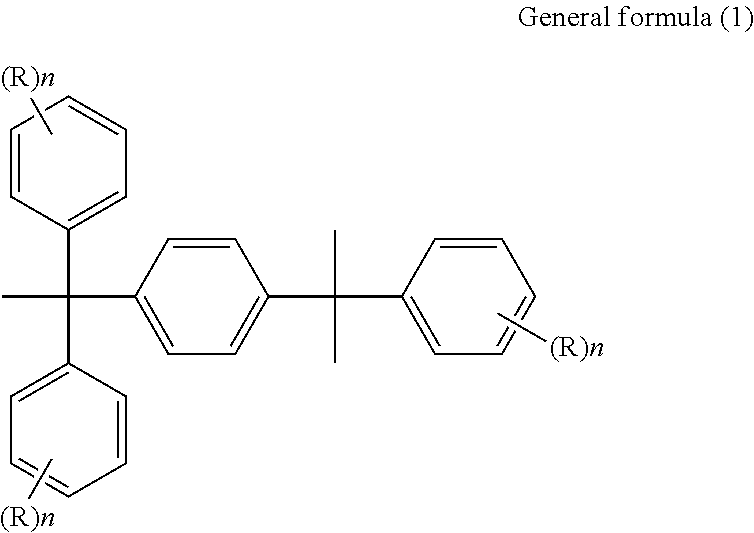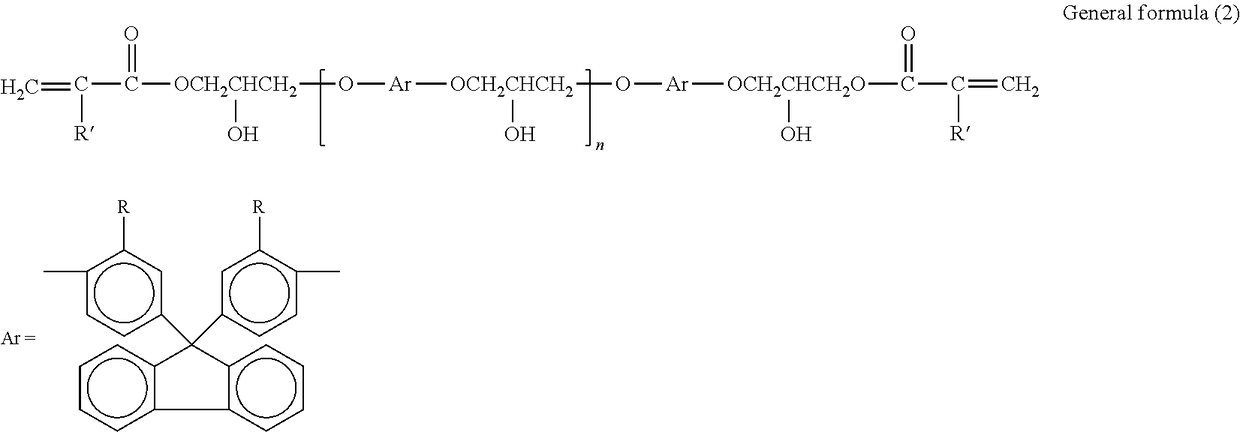Barrier laminate, gas barrier film, and device employing the same
a barrier film and gas barrier technology, applied in the direction of transportation and packaging, synthetic resin layered products, containers, etc., can solve the problems of inferior water vapor barrier properties relative to glass substrates, compromising transparence, and presenting problems of transparent gas barrier films, so as to achieve enhanced gas barrier properties, high barrier properties and transparence, the effect of reducing haz
- Summary
- Abstract
- Description
- Claims
- Application Information
AI Technical Summary
Benefits of technology
Problems solved by technology
Method used
Image
Examples
example 1
Fabrication of Gas Barrier Films
[0092]The organic layers and inorganic barrier layers indicated below were alternately laminated in that order on polyethylene terephthalate films (manufactured by Toyobo Co., Cosmoshine A4300, thickness 100 μm) to fabricate gas barrier films. As indicated in the table below, gas barrier films were fabricated in the two forms of a single stack product of one laminate set of an organic layer and an inorganic layer, and a two stack product of two laminate sets.
(Formation of the Organic Layer)
[0093]Polymerizable compositions with solid fraction concentrations of 15 weight %, comprising a solid fraction in the form of a polymerizable compound, a silane coupling agent as needed (KBM5105 manufactured by Shin-Etsu Chemical Co., Ltd. or the silane coupling agent (1) indicated below), and a polymerization initiator (Esacure KT046, manufactured by Lamberti Corp.) in the compositions indicated in the table below were fabricated using 2-butanone as solvent. The c...
example 2
[0103]Gas barrier films in which the material and thickness of the inorganic barrier film were varied as shown in Table 3 were fabricated from samples 102 and 104 in Example 1 and the barrier properties (water vapor permeability) were evaluated. Films of silicon nitride were formed by the plasma CVD method that was used in Example 1, films of aluminum oxide (refractive index 1.63) were formed by the sputtering method, and films of silicon oxide (refractive index 1.45) were formed by the electron beam vapor deposition method.
TABLE 3Organic layerInorganic barrier layerFormulaRefractiveRefractiveThicknessWater vaporGas barrier filmno.indexMaterialindex(nm)permeability401 (Comparative Example)B1.585Silicon nitride1.95131.1 × 10−3402 (Comparative Example)B1.585Aluminum oxide1.63131.4 × 10−3403 (Comparative Example)B1.585Silicon oxide1.45132.7 × 10−3404 (Present invention)D1.605Silicon nitride1.95137.5 × 10−4405 (Present invention)D1.605Aluminum oxide1.63139.3 × 10−4406 (Comparative Examp...
PUM
| Property | Measurement | Unit |
|---|---|---|
| refractive index | aaaaa | aaaaa |
| refractive index | aaaaa | aaaaa |
| pressure | aaaaa | aaaaa |
Abstract
Description
Claims
Application Information
 Login to View More
Login to View More - R&D
- Intellectual Property
- Life Sciences
- Materials
- Tech Scout
- Unparalleled Data Quality
- Higher Quality Content
- 60% Fewer Hallucinations
Browse by: Latest US Patents, China's latest patents, Technical Efficacy Thesaurus, Application Domain, Technology Topic, Popular Technical Reports.
© 2025 PatSnap. All rights reserved.Legal|Privacy policy|Modern Slavery Act Transparency Statement|Sitemap|About US| Contact US: help@patsnap.com



